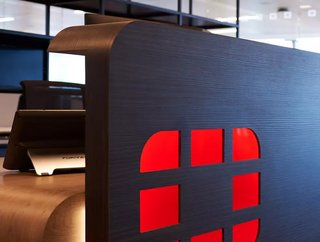Fortinet: IoT Endpoint Security in Manufacturing OT Networks

Industry 4.0 in the last 10 years has become a commonplace word in the manufacturing industry.
With a predicted global market value of US$337.10bn by 2028, the understanding of the benefits of advanced technology to increase productivity, increase efficiency, increase transparency, and reduce cost has grown since the term was first introduced in 2011.
However, as the use of advanced technologies and connected devices increases, so does the potential risk of cybercriminals for businesses.
Recent research from Fortinet’s ‘2020 State of Operational Technology and Cybersecurity Report’ reveals that nine out of 10 organisations experienced at least one OT system intrusion, with 65% experiencing three or more.
“These devices, or endpoints, are proliferating and making the task of securing them more difficult. It is therefore vital for businesses to deploy solutions that protect their cybersecurity front line,” says Fortinet.
What is Endpoint Security, and Why is it Important?
For devices such as laptops, desktops and mobile phones, endpoint security software enables organisations to protect these kinds of devices on either a network or in the cloud from cyber threats.
With hackers launching a cyberattack every 39 seconds (a daily total of 2,244 attacks), “the modern business landscape is seeing an increasing volume of cybersecurity threats from increasingly sophisticated cybercriminals,” says Fortinet, and endpoints are one of the most common targets.
Predicted to rise to 38.6bn by 2025 and 50bn by 2030, it is important for organisations to protect these popular entry points for cybercriminals.
“Every device an employee uses to connect to any business system or resource carries the risk of becoming the chosen route for hacking into an organisation. These devices can be exploited by malware that could leak or steal sensitive data from the business. In the face of this, it is imperative for businesses to deploy solutions that can analyse, detect, then block and contain cyber attacks as they happen,” says Fortinet.
“Organisations also need to collaborate with one another and utilise technologies that provide their IT and security teams with visibility into advanced threats, enabling them to quickly detect security risks and swiftly remediate potential issues.”
Securing the Industrial Internet of Things (IIoT)
“Digital transformation is impacting the security of [Operational Technology (OT)] environments,” states Fortinet.
With today’s digital marketplace requiring faster response times to consumer demands than traditional OT processes can deliver, organisations are adding industrial IoT devices and real-time data collection and analysis to OT networks to automate traditionally static and manual processes, creating smart physical environments.
While this helps to create greater efficiency, digital transformation is driving “system complexity brought about through the amalgamation of OT technology,” says Fortinet, which ”is raising the stakes, and the complexity of security integration, even higher.”
Solving Modern OT Security Challenges
Essential to solving modern OT security challenges is a more systematic solutions approach, “attempts to address risk by simply deploying off-the-shelf firewalls, sandboxes, and IPS systems into OT environments present an unacceptable, disruptive, and uncertain outcome,” emphasises Fortinet.
Organisations should look to design security into an OT network that is integrated at the highest level in order to address the ‘bigger picture’ to achieve absolute availability, safety, and security, instead of a bolt-on afterthought.
Are you looking to improve your security? Discover Fortinet’s solutions for IoT.
Download Fortinet’s full ‘2020 State of Operational Technology and Cybersecurity Report’ here.






